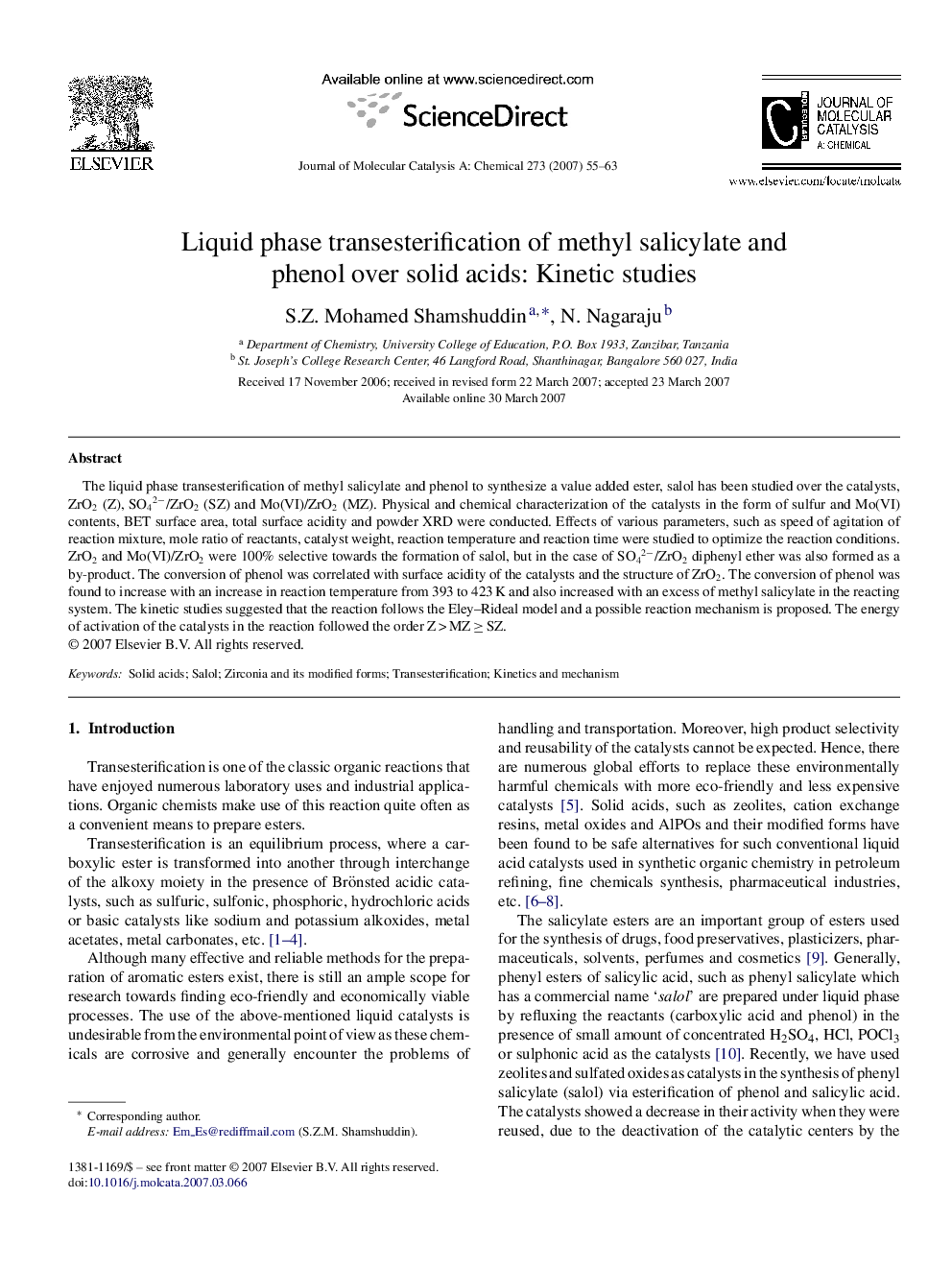| Article ID | Journal | Published Year | Pages | File Type |
|---|---|---|---|---|
| 67873 | Journal of Molecular Catalysis A: Chemical | 2007 | 9 Pages |
The liquid phase transesterification of methyl salicylate and phenol to synthesize a value added ester, salol has been studied over the catalysts, ZrO2 (Z), SO42−/ZrO2 (SZ) and Mo(VI)/ZrO2 (MZ). Physical and chemical characterization of the catalysts in the form of sulfur and Mo(VI) contents, BET surface area, total surface acidity and powder XRD were conducted. Effects of various parameters, such as speed of agitation of reaction mixture, mole ratio of reactants, catalyst weight, reaction temperature and reaction time were studied to optimize the reaction conditions. ZrO2 and Mo(VI)/ZrO2 were 100% selective towards the formation of salol, but in the case of SO42−/ZrO2 diphenyl ether was also formed as a by-product. The conversion of phenol was correlated with surface acidity of the catalysts and the structure of ZrO2. The conversion of phenol was found to increase with an increase in reaction temperature from 393 to 423 K and also increased with an excess of methyl salicylate in the reacting system. The kinetic studies suggested that the reaction follows the Eley–Rideal model and a possible reaction mechanism is proposed. The energy of activation of the catalysts in the reaction followed the order Z > MZ ≥ SZ.
Graphical abstractFigure optionsDownload full-size imageDownload as PowerPoint slide
